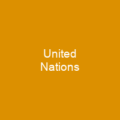
What Exactly Is Multilateralism?
Multilateralism is an alliance of multiple countries working towards common goals based on principles of inclusivity, equality, and cooperation. It’s like a team sport where everyone has a role to play, ensuring that no one gets left behind. Think of it as a global village where every member contributes to the collective well-being.
Key Players: Middle Powers
Middle powers, such as Canada or Germany, often take the lead in promoting multilateralism. These countries are like the glue that holds the team together, ensuring that even smaller nations have a voice and influence. They act as mediators between larger powers, fostering an environment where everyone can contribute.
Advantages of Multilateralism
The advantages of multilateralism are numerous. It enables countries to solve transnational problems through shared responsibility and burden-sharing. Imagine if every country contributed a small piece to the puzzle; together, they could form a complete picture. This approach is particularly effective in addressing issues like climate change or global health crises.
Challenges Faced by Multilateralism
However, multilateralism faces significant challenges from the rise of populism, nationalism, and protectionism. These forces often prioritize short-term gains over long-term cooperation. It’s like a team where some members want to go it alone, ignoring the benefits of working together.
Multilateralism in Practice
John Ruggie defines multilateralism as an institutional form that coordinates relations among three or more states based on generalized principles of conduct. This means that countries come together under a common set of rules and agreements, much like how international organizations such as the United Nations (UN) and World Trade Organization (WTO) operate.
Regional Multilateralism
The concept of regional multilateralism has gained traction in recent years. This approach suggests that contemporary problems can be better solved at the regional rather than the bilateral or global levels. For example, the European Union is a prime example of regional multilateralism, where countries work together to address common challenges.
Historical Context
The term “multilateralism” has its roots in historical events such as the Congress of Vienna (1814-1815), which redrew the map of Europe after the Napoleonic Wars. This event marked a significant shift towards multilateral diplomacy, where great powers met to address global issues collectively.
Modern Challenges
The challenges faced by multilateralism today are multifaceted. The United States’ increasing dominance in terms of military and economic power has led countries like Iran, China, and India to question the UN’s relevance. This shift is akin to a powerful player changing the rules of the game, making it harder for others to participate.
Global vs. Bilateral
Bilateralism versus multilateralism is influenced by power asymmetries. Multilateralism works well for small powers trying to control larger ones, while bilateral alliances are more effective for great powers seeking control over smaller ones. The U.S., for instance, chose multilateralism in Europe through NATO but a bilateral Hub and spokes architecture in East Asia to counter potential rogue allies.
Conclusion
Multilateralism is not just an abstract concept; it’s a vital tool for addressing global challenges. It’s about coming together as a team, where every member contributes to the greater good. While challenges exist, the benefits of multilateral cooperation far outweigh the costs. As we navigate the complexities of our interconnected world, let us remember that unity and collaboration are key to building a better future.
You want to know more about Multilateralism?
This page is based on the article Multilateralism published in Wikipedia (retrieved on November 24, 2024) and was automatically summarized using artificial intelligence.






